Abstract
Conditioning stimulation of dynamic fusimotor axons leaves persistent after-effects which increase the responses of primary endings to test dynamic stimuli. Such after-effects are abolished by muscle stretch. Destruction of these after-effects depends on the following. (a) Amplitude of stretch: with symmetrical triangular stretches of moderate velocity, an extension of soleus by 4-5 mm totally abolishes the after-effects. Lesser stretches cause a graded reduction. (b) Velocity of relaxation: for a given amplitude of stretch there is greater destruction of after-effects when it is followed by a slow rate of relaxation than after rapid relaxation. (c) After-effects tested late in ramp stretch are more resistant to destruction by stretch than those increasing test dynamic responses early in ramp stretch. Stretch itself produces after-effects which enhance test responses to dynamic but not to static fusimotor stimulation. Interactions between conditioning dynamic stimulation and stretch suggest that both these effects occur in the same intrafusal elements, the bag fibres.
Full text
PDF
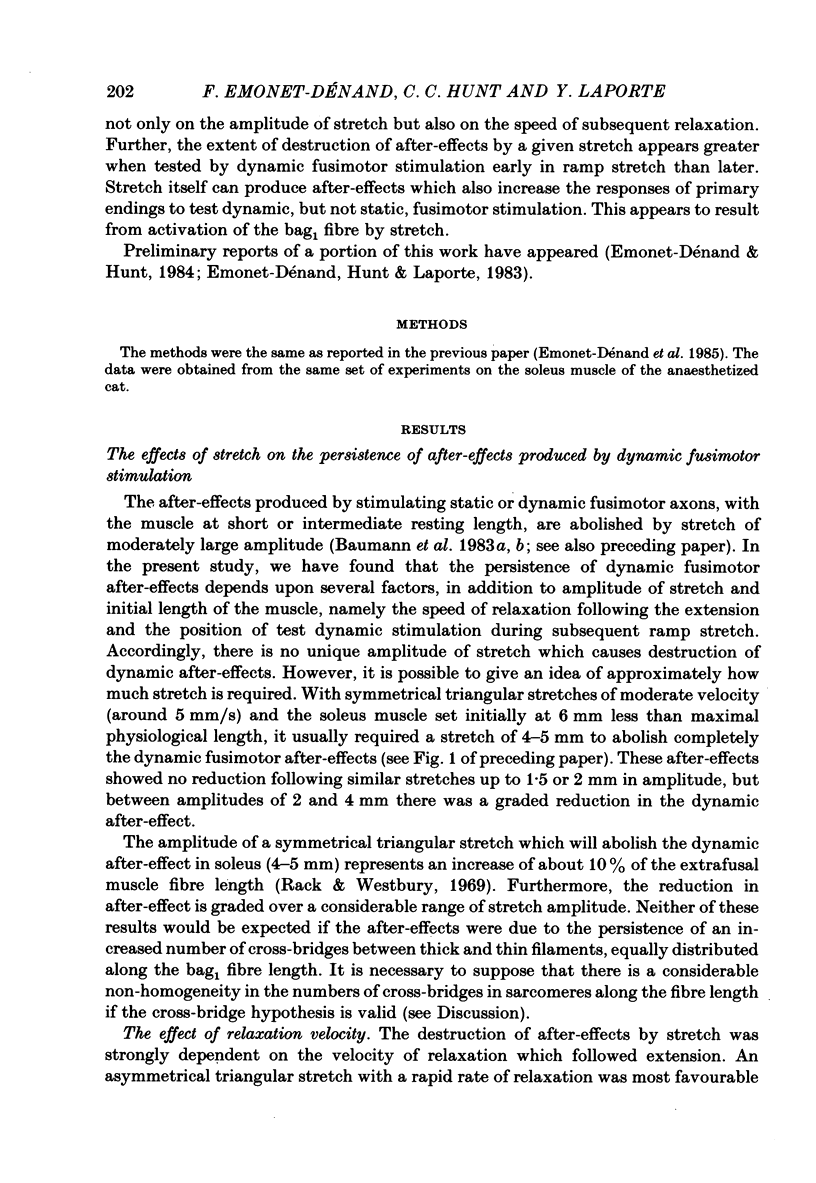
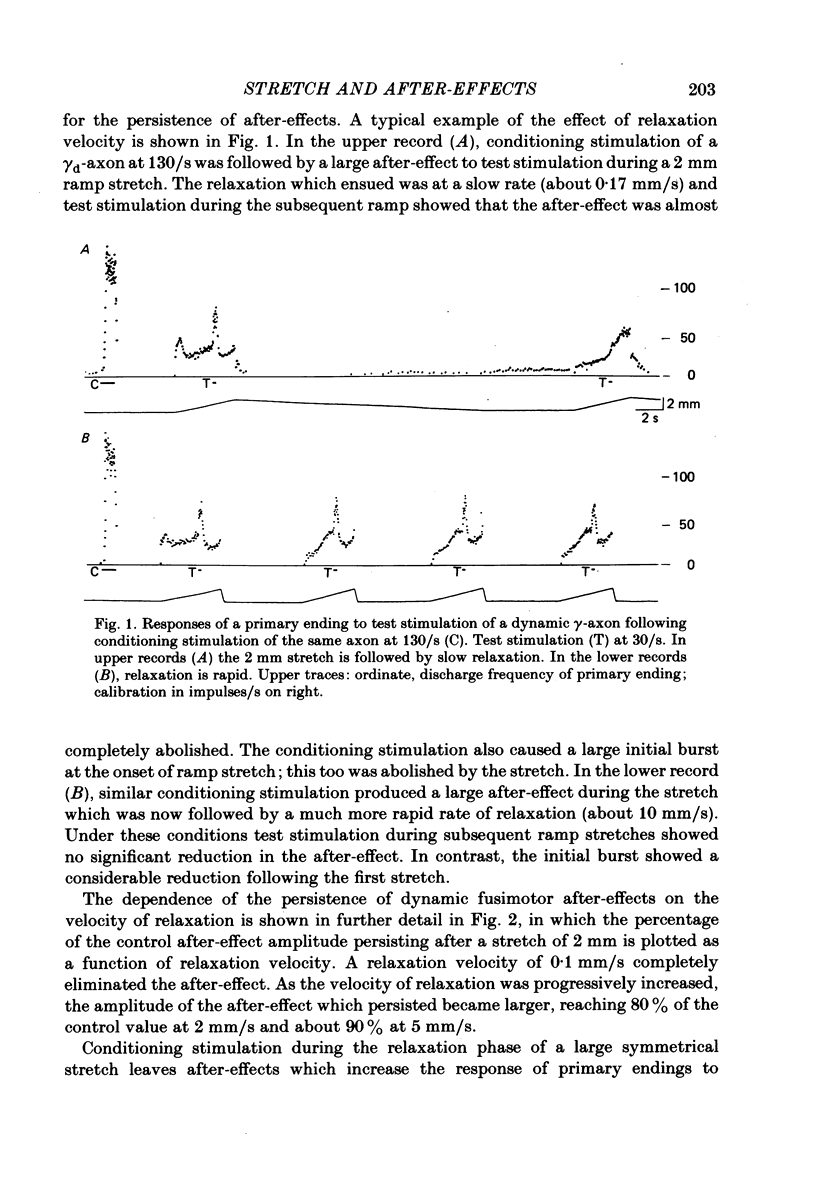


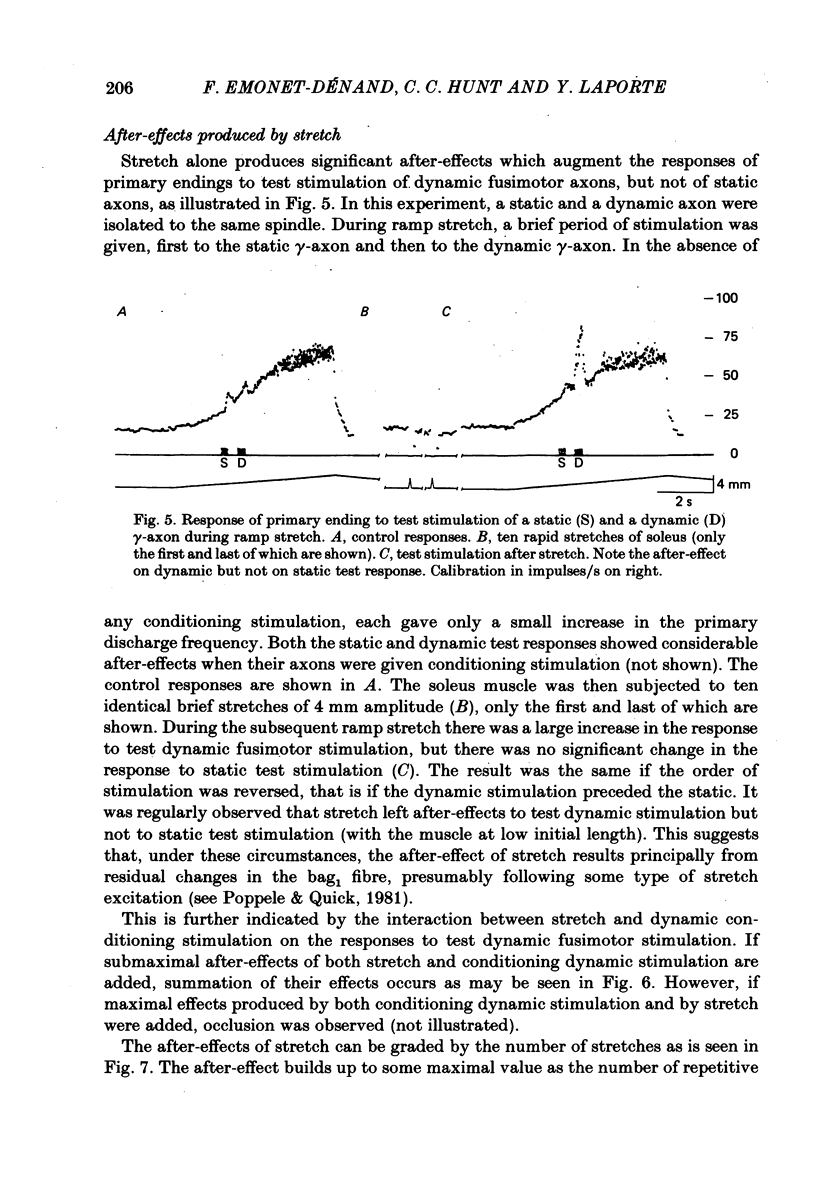
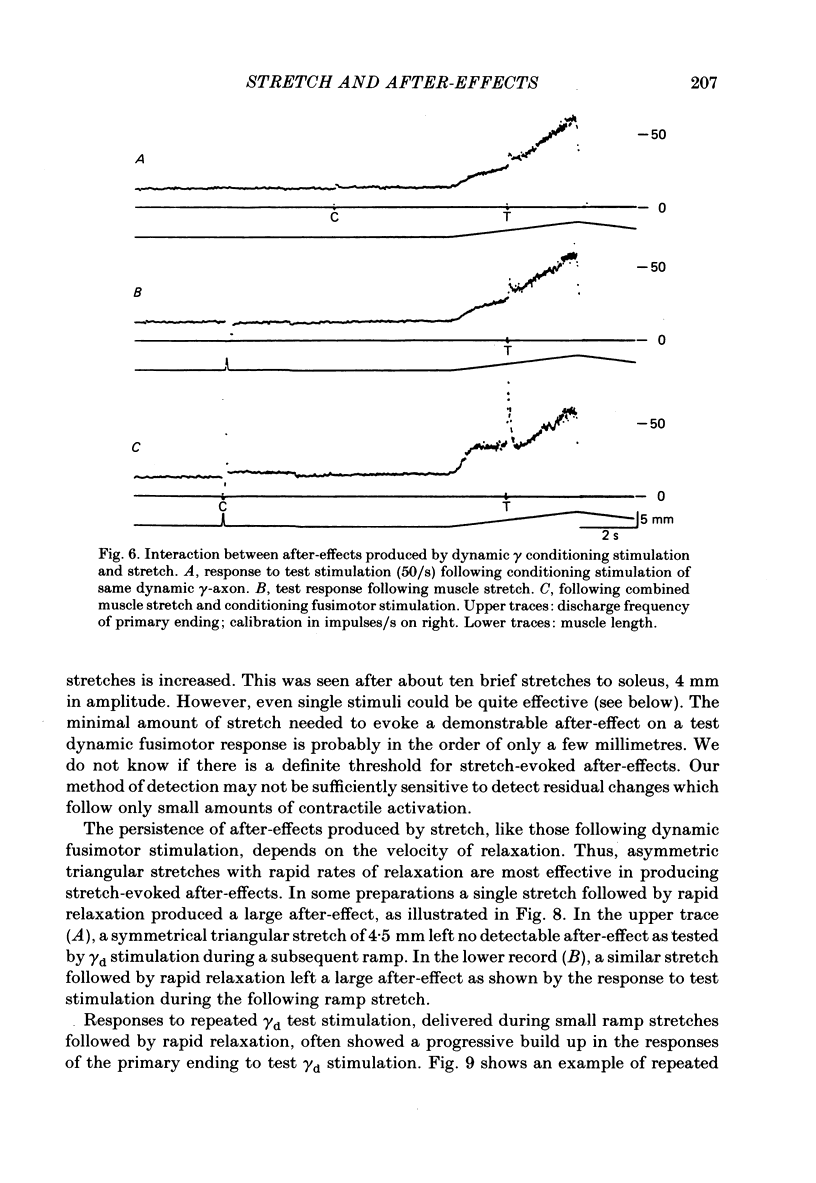


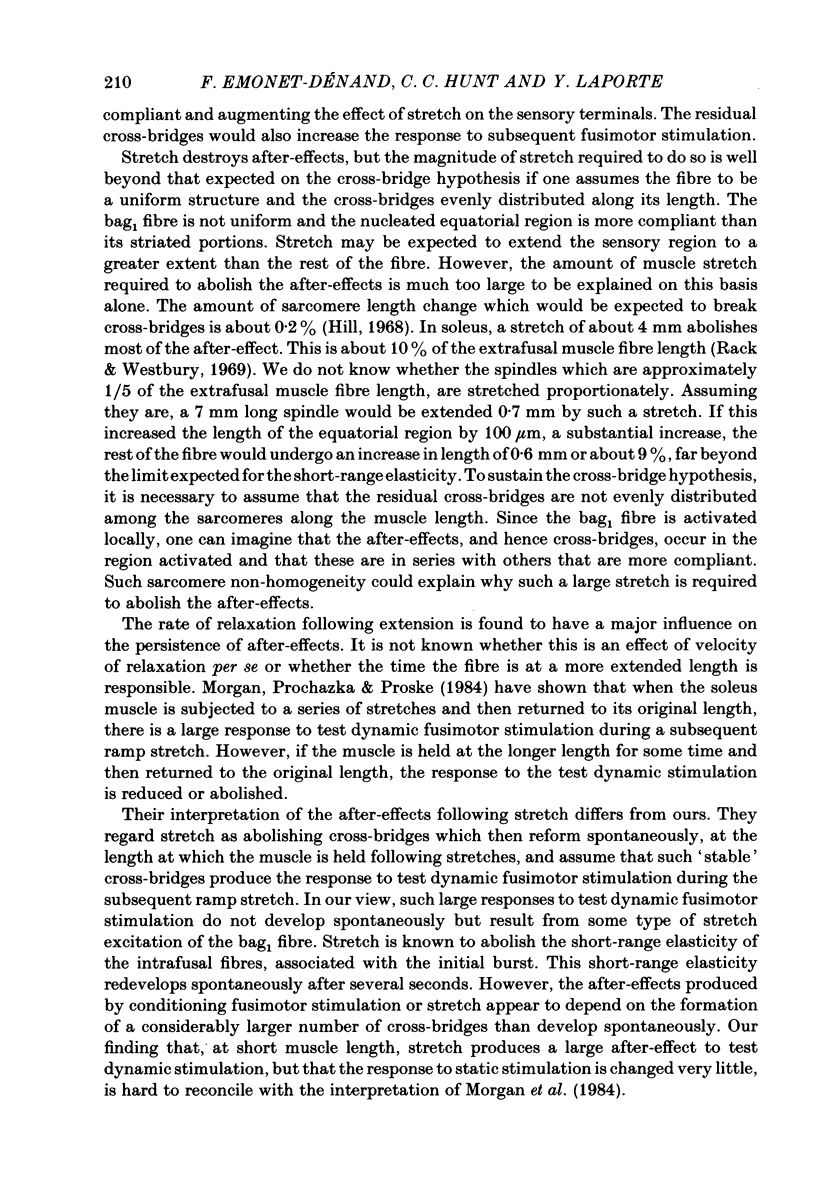
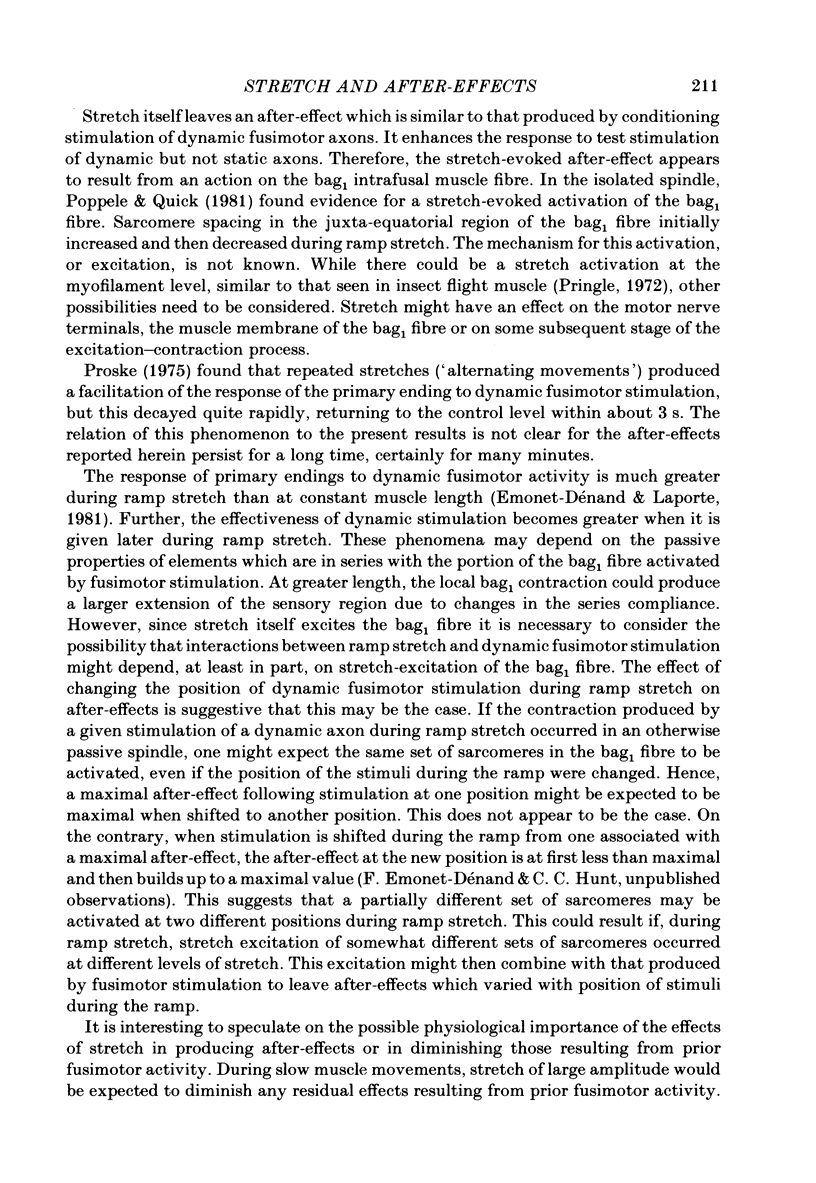


Selected References
These references are in PubMed. This may not be the complete list of references from this article.
- Baumann T. K., Emonet-Dénand F., Hulliger M. After-effects of fusimotor stimulation on spindle la afferents' dynamic sensitivity, revealed during slow movements. Brain Res. 1982 Jan 28;232(2):460–465. doi: 10.1016/0006-8993(82)90289-x. [DOI] [PubMed] [Google Scholar]
- Emonet-Dénand F., Hunt C. C., Laporte Y. Fusimotor after-effects on responses of primary endings to test dynamic stimuli in cat muscle spindles. J Physiol. 1985 Mar;360:187–200. doi: 10.1113/jphysiol.1985.sp015611. [DOI] [PMC free article] [PubMed] [Google Scholar]
- Hill D. K. Tension due to interaction between the sliding filaments in resting striated muscle. The effect of stimulation. J Physiol. 1968 Dec;199(3):637–684. doi: 10.1113/jphysiol.1968.sp008672. [DOI] [PMC free article] [PubMed] [Google Scholar]
- Morgan D. L., Prochazka A., Proske U. The after-effects of stretch and fusimotor stimulation on the responses of primary endings of cat muscle spindles. J Physiol. 1984 Nov;356:465–477. doi: 10.1113/jphysiol.1984.sp015477. [DOI] [PMC free article] [PubMed] [Google Scholar]
- Poppele R. E., Quick D. C. Stretch-induced contraction of intrafusal muscle in cat muscle spindle. J Neurosci. 1981 Oct;1(10):1069–1074. doi: 10.1523/JNEUROSCI.01-10-01069.1981. [DOI] [PMC free article] [PubMed] [Google Scholar]
- Proske U. Stretch-evoked potentiation of responses of muscle spindles in the cat. Brain Res. 1975 May 2;88(2):378–383. doi: 10.1016/0006-8993(75)90403-5. [DOI] [PubMed] [Google Scholar]
- Rack P. M., Westbury D. R. The effects of length and stimulus rate on tension in the isometric cat soleus muscle. J Physiol. 1969 Oct;204(2):443–460. doi: 10.1113/jphysiol.1969.sp008923. [DOI] [PMC free article] [PubMed] [Google Scholar]


